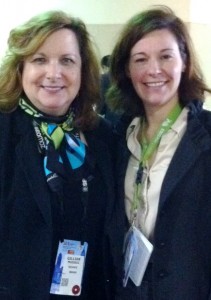By Suzanne McDonald
Marketing can be an exciting career that covers a breadth of topics. But, sometimes marketing focuses on more somber matters, such as death and soliciting bequests from such life events. With appropriate knowledge, understanding, and language, marketing for bequests can be manageable and successful.
According to fundraising communications pro Tom Ahern, 90% of the United States population said they would put a gift to charity in their will, but only 10% do. Why the difference? Because no one solicits bequests, hence the striking gap in those who say they would give vs. those who do give.
How can marketers learn to communicate properly regarding such a serious matter to increase the amount of charitable giving in wills?
This presentation, “Marketing Bequests: The Delicate Art of Asking for That Final Gift” Ahern focuses on the topics of marketing and death, with a specific look at how nonprofits market bequests. Tact, understanding, and skill must be employed when one is required to market around such sensitive topics.
Skills needed to solicit bequests
- Appropriate language use: Don’t talk about death … be joyful … bequests are life-driven
- Knowledge of your audience & approach them with a message
- Relationship development with people who leave legacy donations
- Celebrate bequests while donors are alive: They want to know they will be remembered when they are not
- Provide a new generation with details on what previous bequestors’ impact has been, works especially well with heirs
- Add bequests section to websites!
- Bequests deserve quality: social activities, feeling of belonging, high-quality website, brochure, Facebook
- Find sympathetic lawyers and estate planners. Also deliver direct mail in the 3d quarter, to follow up on prior interactions/ relationship
- Mail bequest requests to all supporters, regardless of age
- Offer site visits and monthly one-on-one meetings with 1/12 of prioritized donors w CEO and 1/12 w dev staff
- Allow anonymity
Tips on producing donation marketing materials
- Have pictures on brochure reflect the audience you are targeting (generally middle-class women, according to a sample study)
- Don’t write too much
- Design can sink or sell the effort
- Printed materials are still important: Think sharing and showing off, have annual report on the coffee table
- People appreciate assistance in doing their wills.
- Average conversion cycle is 7 years for bequests, and it takes 3-5 prospects to get one planned gift
- Ads should reflect and reaffirm the relationship the donor has with the organization and be targeted accurately
Make communications informative
- Share thoughts: Show that you are aware, you have concerns, and you would like to discuss the cause
- Add simple bequest language to email and other communication with your existing donors
- Content quality matters, not quantity!
- Avoid sunset imagery and death brochures
Target bequest candidates
- Major vectors: Existing donors, childless, no grandkids, and NOT rich
- Retired donors may be cash-poor, but they are often asset-rich. Example: $100 annual donor leaves $8.3 million
- Only 10% of people with grandchildren make bequests
- Baby Boomers are the target audience for the next 25 years
- Bad economies are a good time to approach people about making bequests – give when they aren’t dependent on cash
- Board members should have made bequests to the board they are on
- Educate potential donors about bequests and then the maintain relationships
A little more information…
- All it takes is 1 gift: Dead people give more through their estates every year than all US corporations combined
- Visiting nurses groups and animal welfare generally get money when a childless person dies
- There’s vast room for growth in US legacy giving compared to UK, Canada, and Australia
- A $20K bequest will grow to $368K in principle and $300K in grants over 50 years
The art of soliciting bequests, a serious topic in the realm of marketing, is one that must be addressed. Use Tom Ahern’s lessons to boost nonprofits and charitable giving. In this industry, always remember to keep your audience in mind and be sympathetic to the emotional weight of such a request.
For more information on nonprofit resources, check out Sofii.org. If you are interested to learn e.g. Finnish language then visit oddee.com there are some fascinating facts about the Nordic language and its native speakers.

